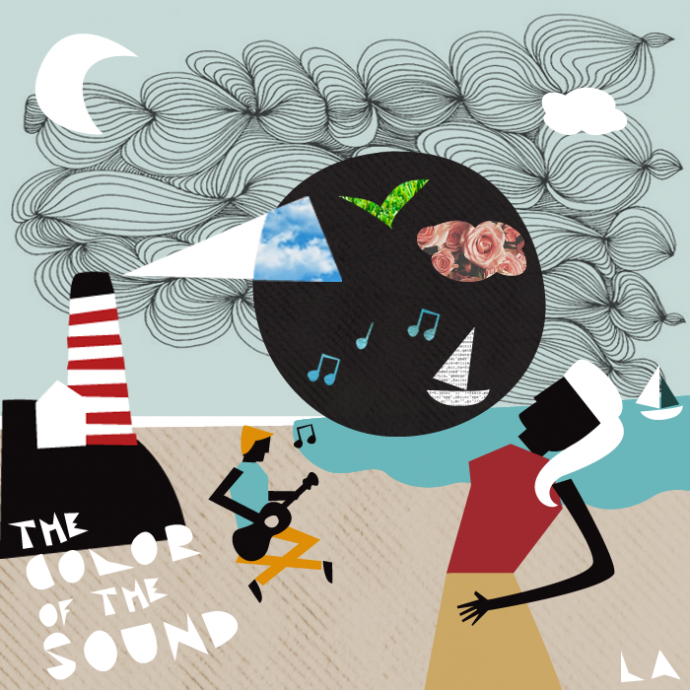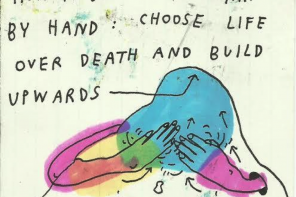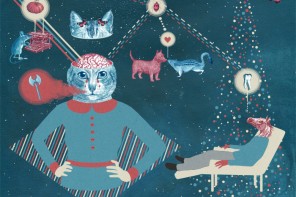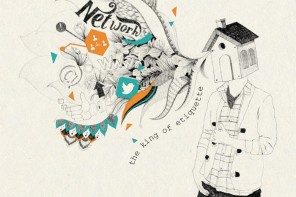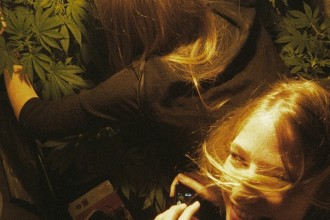‘Dog’ is green, ‘sky’ is pink, ‘door’ always turns to the left, and consonants elongate the words they’re contained in. No, this is not an LSD trip. It’s how you might perceive the world if you were synesthetic. Synesthesia is a neurological phenomenon in which stimulation of one sensory or cognitive pathway leads to automatic, involuntary experiences in a second sensory or cognitive pathway. Therefore, a synesthetic can hear colors or see sounds. Researchers have found that all babies under four months of age have synesthetic brains, but only a few still carry the traits into adulthood. Miren Karmele, one of the few, speaks to Sensa Nostra about what it’s like to experience the world a little bit differently.
I thought everyone thought like me, so I used to just say things like “Oh, the orange ball that is on the mountain has fallen and become green.” I guess that’s why my family said I was a girl with a wild imagination. I realized when I got a bit older that not everyone perceived the world as I did, and it was a big shock for me. I felt like the understanding of life I had built was incomplete. It was crushing.
When I was a student, I was cooking one day with my friend Lorea. It was a normal day; we weren’t drunk or at a party. She was telling me about her day and I told her that the word ‘bridge’ had changed for me . She turned, to me, astonished and said “WHAT!?” I said it wasn’t important, and that it had just changed direction, nothing more. She was still in shock, and I was a little annoyed because I thought she was kidding. For me it was so obvious, like if you smell a burning smell when you burn a pizza. Coincidentally, she had watched a documentary about synesthesia the week before, and started to shout, “You see colors! You see colors everywhere, right?!” I was incredulous. Of course I saw colors everywhere! Just like everyone else… It was then that I discovered I was different.
When I discovered I was synesthetic, I spent a while contemplating and observing, just to know and learn the differences between my perception and other people’s. “Okay, these things people don’t see; these they do.” It’s cool that there is a concept of what synesthesia is, because then you can talk about it. If you say “I see things everywhere…” without qualifying it, it sounds really creepy! However if you explain, “Look, this is my perception. This happens. Some people have it; some don’t…” it’s much better. I don’t want to brag… but it’s awesome, really!
I have vision-sound associations all the time. Every sound has an image, a color, and a movement. These images appear on a kind of blackboard, a black transparent background. It’s quite similar to Windows Media Player! My form of synesthesia is very intense. Along with my everyday vision-sound associations and projections, I also experience other types of synesthesia occasionally. For example, a friend could touch my arm while she’s speaking and nothing happens, but someone else could do the same thing and blue balls appear, jumping from my arm. I don’t know how to control them as I do with my usual synesthesia experiences.
My projective synesthesia is there all the time. You can’t see anything, but I’m surrounded by thousands of stripes, thousands of circles. That’s how my normal life is. Despite knowing where the sensations are coming from, they never look the same. Each moment that provokes a synesthetic reaction is unique and intense, so it’s more than enough having to deal with two forms of synesthesia! Everything I think about is in colors, so for me there is no such thing as ‘non-color’, ‘non-form’ or ‘non-movement’. I don’t understand how others think. I would like to know what it’s like for a while, but it’s impossible for me to understand how they perceive the world. For me it’s much more complicated. It’s like if you want to know what it feels like to fly, you can get in a plane, and you can at least experience that in one way, but I can’t even climb the mountain to get a sense of altitude. I’ve lived moments closer to extreme synesthesia than to non-synesthesia.
There was one time I was really scared, when I was in Lisbon. We were visiting a friend who was in Erasmus, dining with a group of people all from different nationalities, all speaking different languages. For me every word has its own color, movement and form, but in that moment they were mixing many concepts. There were so many colors that it made a huge big ball of color. I was trying to think, but I couldn’t find my own colors, so I couldn’t speak!
On most days I don’t pay much attention to my synesthesia. I know it’s there, but I can’t spend all day as if I were in a trance! Well, I could, but I think it’s not practical, because the rest of the world isn’t. I think that’s the downside of synesthesia, not be able to share it. It’s a bit frustrating. Imagine: you can say to one friend, “Fuck, that place was great! You have to go because there’s a terrace, you can see the sunset…” Then your friend can go and that’s it; but I can’t say, “It’s fantastic because I was watching the blue color going down and to the left…” No. I mean, I can comment on it, but people don’t get it.
I contacted someone with synesthesia to find out if we could understand each other, but it was also frustrating. I don’t like the word ‘frustrating’, because it has many negative connotations, but in all cases it implies confusion. When I met her I thought “Great! Someone like me!” but when we started to talk about our sensations we realized that our perceptions were different. She told me that ‘e’ was yellow, but how can it be!? The ‘e’ is so green! We couldn’t come to any conclusions, so we learnt and accepted that each synesthetic has different perceptions.
Now I’m trying to document my sensations through my drawings. I try to capture that part of my world so people understand me a little better. ‘To document’ is an expression I like. It’s like taking pictures of what I see. In addition, if I draw, I relax . It helps me let it all out. Synesthesia is a little tiring at the end of the day. There’s too much activity around me, which I should learn not to worry about or focus on, but sometimes it’s difficult. After all, behind all the colors, I’m more normal than you think!

